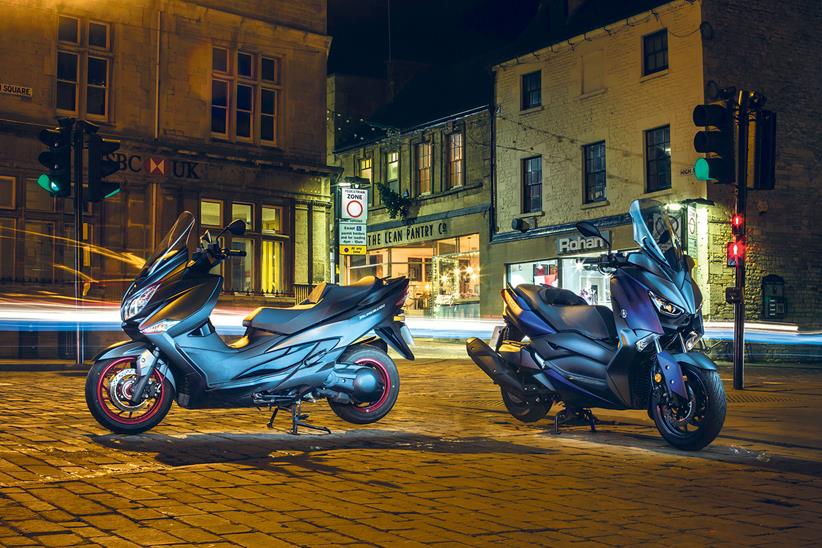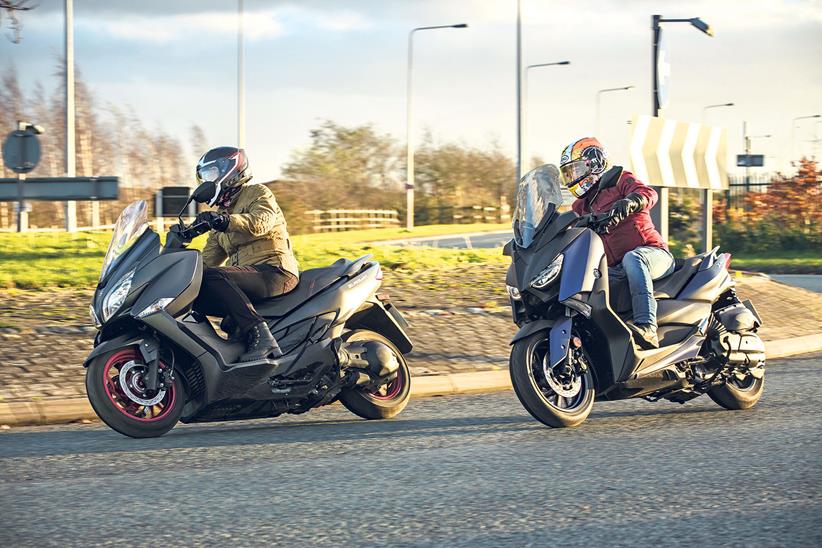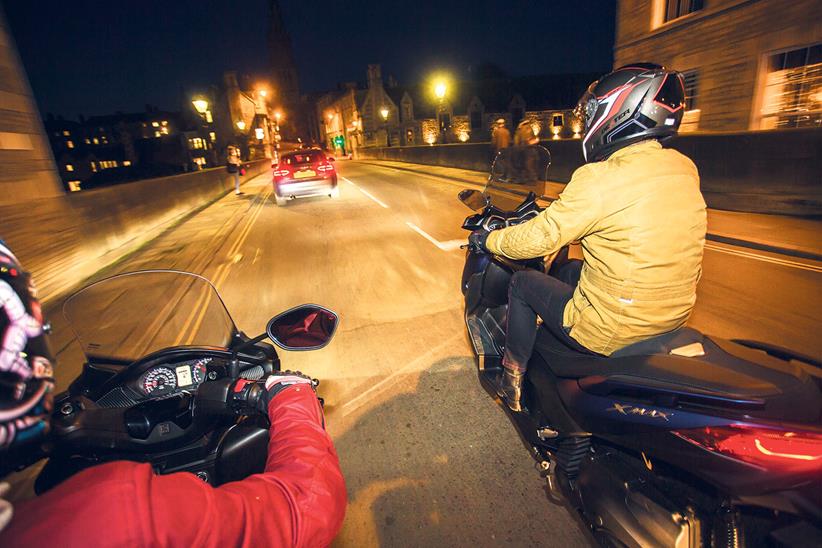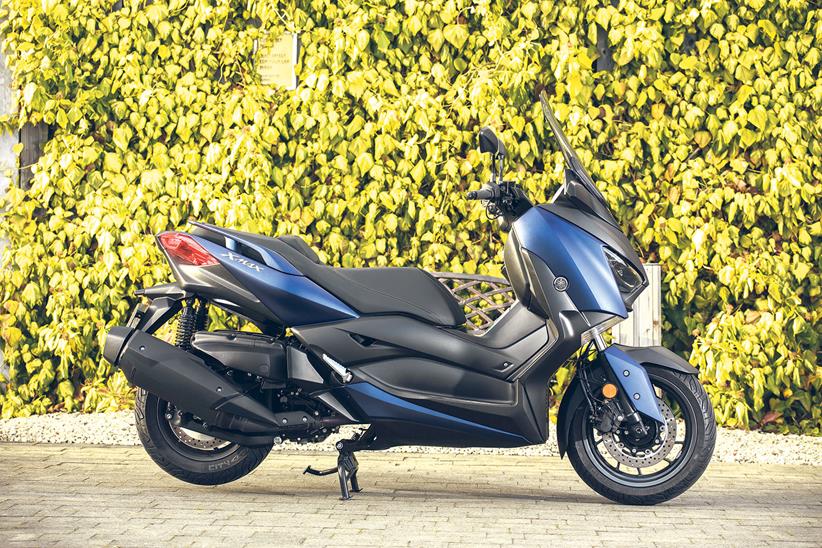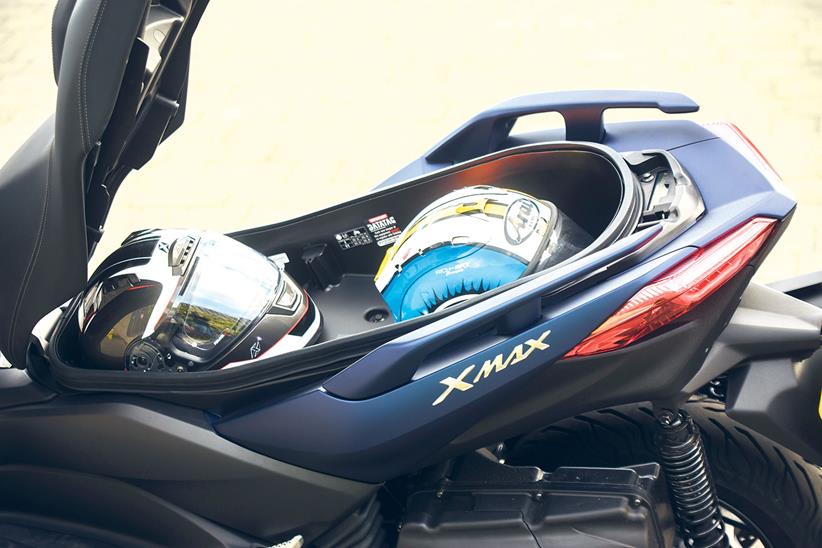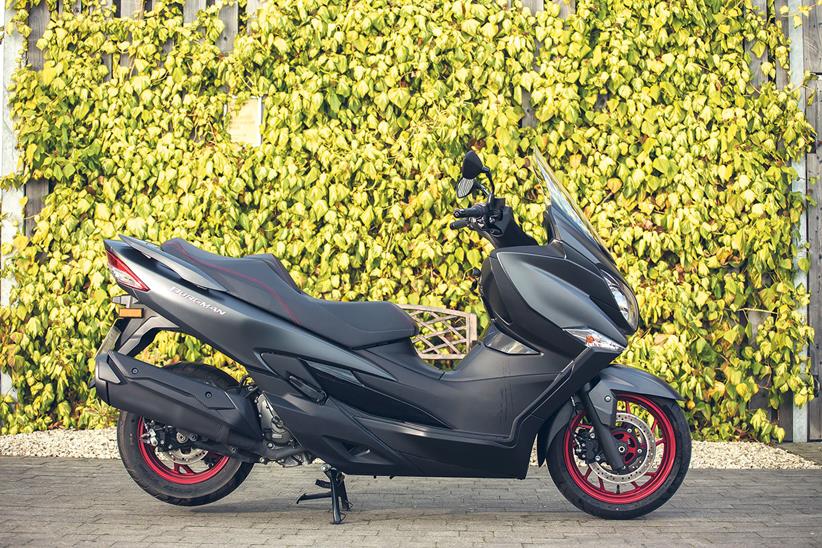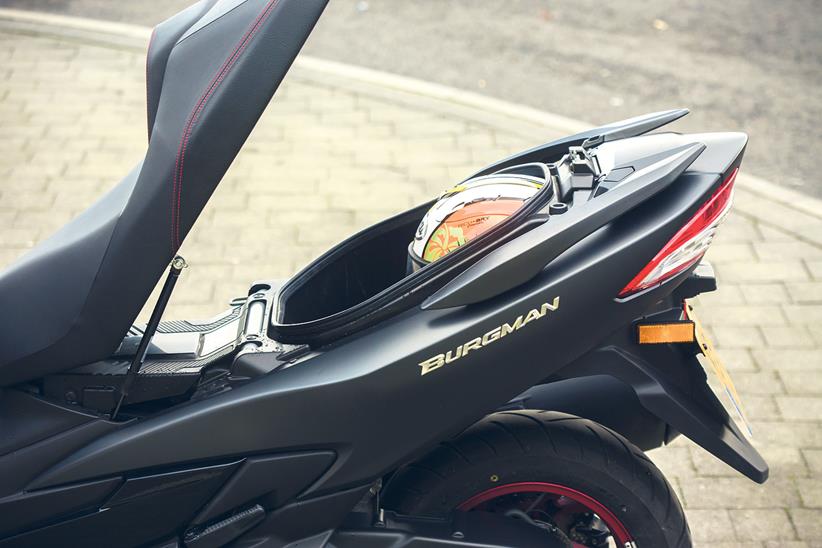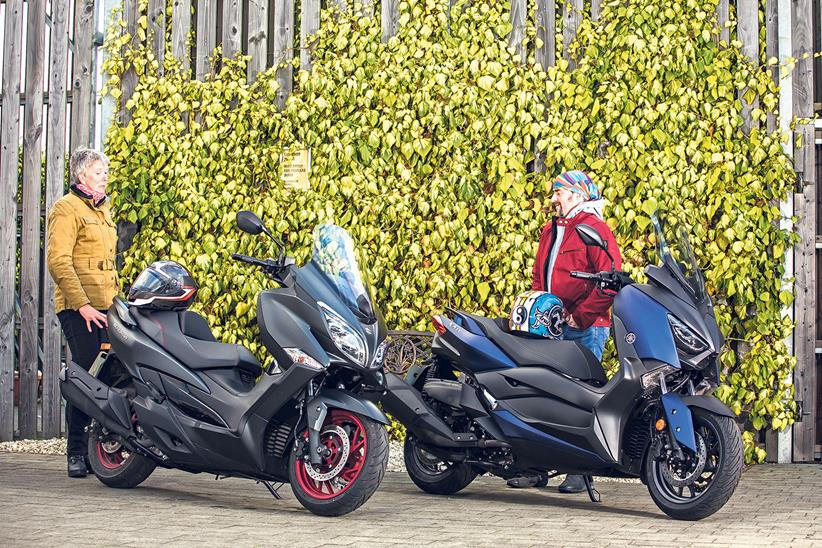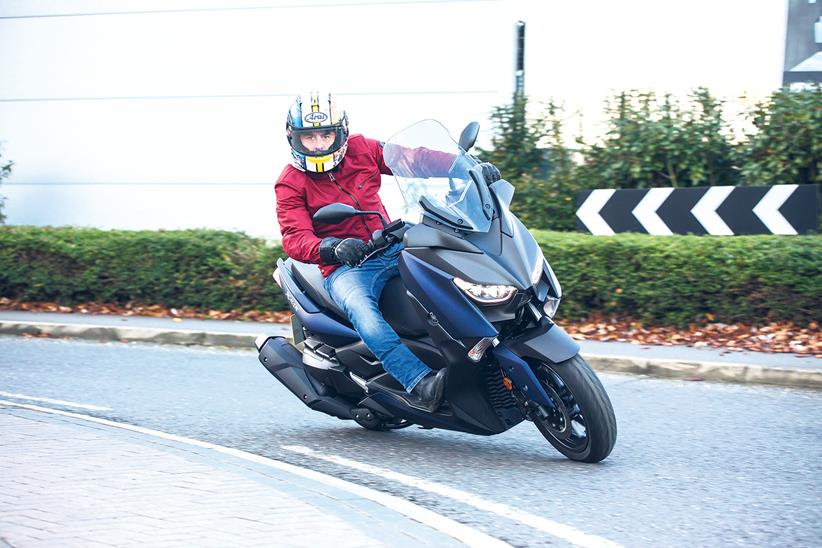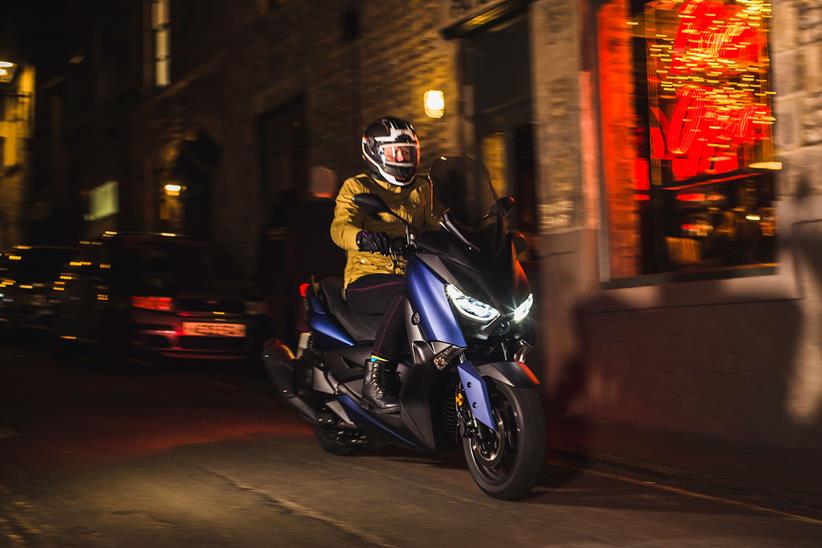Big scooters - why would you need anything else?
Big scoots at small prices – Suzuki’s Burgman 400 v Yamaha’s X-MAX 400
If you want the ultimate large-capacity maxi scooter such as Yamaha’s £9799 TMAX or the £9199 Suzuki Burgman 650, you need deep pockets. However, the middleweight, 400cc versions here offer just as much fun and versatility for a lot less. But which is best?
- Related: Suzuki Burgman 400 review
On looks alone, there’s little to separate them. The new Burgman 400’s red wheels and quality Dunlop rubber give it a sporty look; the red stitching on the seat is a nice touch and the chrome parking brake and neat dash give a quality feel. There’s a 12v socket in the right-hand front glovebox and a decent amount of room in the left – both bigger than the Yamaha’s. As eye-catching as the Suzuki is, the cheaper Yamaha is just as desirable but what about storage?
MORE NEW BIKES
- Three new Harleys could be on the way
- Stunning TVS Apache sportsbike is expected be the base for a striking new BMW G310RR
- Levis blasts back
- Spy shots! New KTM 1290 Super Duke GT spotted
- Subscribe and get the latest issue delivered to your door, every week
The X-MAX 400’s central mounted ‘keyless’ ignition barrel lets you lock both the front compartments, seat and fuel cap. There’s also an alarm if you accidently leave the ignition on and walk away with the key-fob still in your pocket, which is a nice touch.
The large seat on the Suzuki is lockable and released by turning the key in the ignition. There’s enough room for one full-face helmet, or two open face lids at a push. The space is deep and protrudes under the rear grab handles, so you can get a decent amount of fruit & veg wedged in there.
The Yamaha can just about take two full-face helmets under the seat. The compartment is much longer, but not as deep as the Suzuki’s although you’re never short of space on either scoot. Enough of what you fit under the seats, what’s it like sitting on them?
![]()
The Suzuki’s seat is noticeably lower – 775mm compared to 800mm on the Yamaha, which at 5ft 6in, I sometimes struggled with. Why did Yamaha make it so tall? The Burgman is more spacious and comfortable – you can really stretch your legs and relax. There’s even an adjustable lumbar support. The wheelbase is longer on the Suzuki too for extra stability (along with the inch-larger diameter front wheel) and at motorway speeds it’s the least nervous of the two. In strong side winds the Yamaha can get a little unstable, even more so above 70mph. The downside of the Suzuki’s newfound stability is comparatively slow steering.
![]()
The Yamaha is the sportier of the two, lighter by 5kg and the stubbier chassis makes it the more flickable. There’s less suspension travel and the ride is a tad firmer from its budget-looking twin rear shocks. The brakes are also slightly stronger than the Suzuki’s. It’s the perfect combination around town – it’s just a shame it doesn’t have the low seat of the Burgman 400.
Both scooters produce around the same power and have similar acceleration away from the lights, but the Suzuki will rev all the way to its 8000rpm redline. The X-MAX 400 always stops short but it has a slightly better top speed. Where the Suzuki will just about crawl to an indicated 90mph, the Yamaha continues, knocking on the door of an indicated 100mph. Both bikes will smoothly cruise at 80-85mph without vibrating to bits. On the Burgman 400 I did one stint of over 120 miles at fast motorway speeds and still felt relatively refreshed after two hours in the saddle.
The Suzuki fares slightly better at the pumps, but neither match their claimed fuel figures. The Yamaha actually averages between 53mpg and the Suzuki is always over 60mpg. Both do around 130-140 miles before the reserve light comes on.
The Yamaha is the sportier of our two scooters, has a higher level of finish, neater clocks, keyless ignition and lockable storage compartments. It’s slightly easier around town, turns a little quicker, but the seat is high and firm for short riders and it doesn’t have the roomy comfort of the Suzuki. The Burgman 400 is a little more basic, has a lower seat, but there’s more storage up front and matches the Yamaha for style. The majority of riders will prefer the Yamaha, but the Suzuki is right on its heels and over distance I prefer it.
Neither scooter is designed for touring, but both can tackle long journeys with ease and during our test proved how versatile they are, raising the question: why would you actually want anything bigger, or more expensive?
